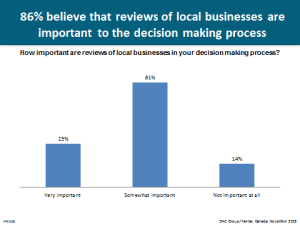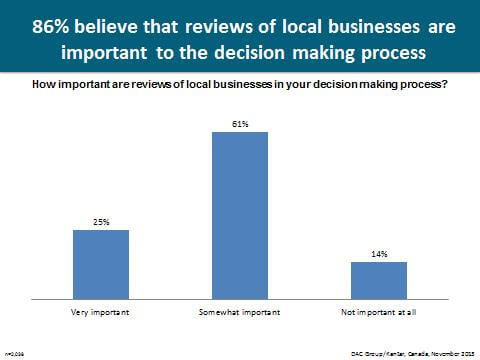In the age of digital advertising, citizen journalism and social engagement, brand integrity, reputation and storytelling are largely defined by the consumers who admire (or despise) them.
With authenticity a fundamental concern for any brand, successfully managing brand reputation, winning fans and fostering loyalty amongst consumers takes a steady hand and a strong ethical compass.
Ratings and review sites add a new challenge (read: opportunity) to the plates of brand and community managers. Sadly, online bots that have tormented SEM and Google ranking results have cousins – astroturfers (astroturfing)…
Recently, Susan Krashinsky of Canada’s Globe & Mail reported that Canada’s Competition Bureau is looking into the practice of “astroturfing” – acknowledging consumer complaints and exercising diligence in vetting activity that threatens the Competition Act.
The ramifications are twofold. Posting reviews under false pretense erodes consumer confidence and tarnishes brand credibility. After all, if a brand endorses less than truthful reviews, consumers are naturally led to ask “What’s squeaking by on the production line?” If consumer trust and brand credibility aren’t enough to keep brands on course, it may be the criminal punishment that scares them straight – individuals can face fines of up to $200,000 and/or jail time (of up to 14 years!), and offending corporations could face penalties of $10 million for a first offense.
The penalties may seem steep; however, one needs to keep in mind that online reviews are a driving influence in consumer decision making that can make or break businesses and in many cases impact world markets.
In her article, Susan references a helpful consumer bulletin posted by the Bureau to help individuals assess reviews, but the question still remains: “What are brand marketers to do?”
While sound arguments can be made for and against the credibility of posts made by (often) anonymous reviewers, the research is clear: ratings and reviews influence purchase decisions*. Marketers would be wise to seize the opportunity for transparent engagement.

Love them or hate them, reviews are here to stay. The influence of peer/consumer ratings and reviews is on the rise, so we asked our local search marketing experts for their top tips for brand managers in the area of online presence management.
Provide (Internal) Direction – Ensure your internal teams are aware of “astroturfing” and be clear that it is not condoned or acceptable practice within your organization.
Utilize Monitoring Tools – Tools like DAC’s presence management suite include a comprehensive multi-location dashboard view of what’s being said about brands right down to the hyper-local level. A service that dovetails nicely into the agency’s location management services. We encourage clients to look at various options when choosing monitoring tools to ensure features and services meet the unique needs of their band.
Be Proactive – Monitoring tools provide near real time insight into brand conversation. When you see false or unclear information, there is nothing inappropriate about addressing it or providing clarification openly within a review site (just be certain to clearly identify yourself as a brand/company representative when chiming in). For 1:1, unique or complicated consumer issues that others would not benefit from seeing publicly resolved, provide the reviewer with the appropriate contact information to speak with someone directly. Don’t be shy about acknowledging the good stuff either: a public thank you to a consumer can go a long way in letting fans know that a brand is listening to their wants and needs.
Exercise Transparency – See identity disclosure in bullet three.
Hold Your Brand to a Higher Standard – Don’t be afraid to raise the bar for your brand and the team behind it. Ratings and reviews can often uncover trends (good and bad) and users often uncover things that those of us too close to the brand may not see. Take action where you can to make a good brand better and watch as your fans thank you for it.
Does your team currently monitor ratings and reviews about your company or its brands? Share your thoughts/questions below in the comments section for discussion.
Contact DAC today to find out more!





